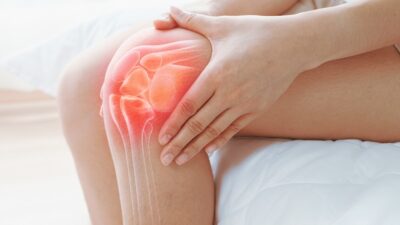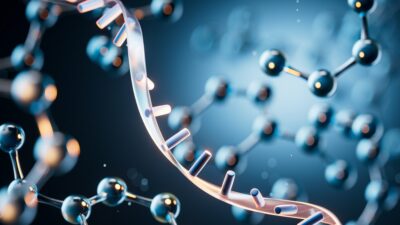Some Brain Changes May Cause Strength Loss
- The brains of some older people become less able to support their bodies.

In Aging Cell, researchers have published data on a causal link between brain structure changes and age-related muscle loss (sarcopenia).
Not just falls and frailty
Sarcopenia is a key reason for the loss of independence among older people. Data on the prevalence of this gradual disorder varies by region and measurement, but some data suggests that one in twenty to one in four people over 65 in Asia may have it [1], and it is much more common in nursing homes [2].
Previous work has linked cognitive decline to sarcopenia [3, 4], which should be no surprise given that the disorders are rooted in fundamental aspects of aging. However, this work was cross-sectional and compared different people, making it impossible to prove a causal relationship. According to the authors of this paper, it isn’t just that sarcopenia and cognitive decline have the same fundamental causes: the two are causally linked.
To prove it, they relied on Mendelian randomization, a data processing technique that is well-equipped for the purpose [5]. They used this technique in both directions, looking to see how much the muscles affect the brain and vice versa.
Putting together the dataset
For brain data, the researchers used a genome-wide association set (GWAS) of 33,224 UK Biobank participants, and constructed 1,325 brain imaging structure phenotypes based on this data. These phenotypes were divide into cortical and whole-brain aspects of tissue thickness and volume.
There is no GWAS for sarcopenia by itself. However, there are GWASes for grip strength, walking pace, and appendicular lean mass, all of which have strong, fundamental associations with sarcopenia. These studies were also based on UK Biobank data, with the lean mass study including data from nearly half a million people.
In a specialized single-trait analysis study, some of the correlations that the researchers were looking for did not exist. For example, there was no significant relationship between either hand’s grip strength and brain imaging, according to this analysis’s very high threshold necessary for statistical significance. However, this analysis did find significant relationships between phenotypes of lean mass and walking speed.
The researchers then turned to a different form of analysis looking for causal relationships. Here, handgrip strength was found to be significantly affected by certain brain regions, with several phenotypes having effects on grip strength in both hands and others having effects on only one hand or the other. Walking speed was also affected by other regions, and interestingly, larger volume in one cortical region was found to be associated with slower walking. The results were similar for lean mass, with 27 phenotypes being found to have a connection.
The authors were unable to explain some of these results. However, some of them have a clear association: the explained reason for some of the handgrip strength and lean mass losses is that some of the parts of the brain responsible for motor function deteriorate with age. Therefore, as the brain becomes less able to support the body, the body’s deterioration is accelerated as well.
Fortunately for some people with frailty, this study also showed a lack of any reverse causality: muscle deterioration, at least according to these researchers, does not directly lead to brain loss.
Literature
[1] Chen, L. K., Woo, J., Assantachai, P., Auyeung, T. W., Chou, M. Y., Iijima, K., … & Arai, H. (2020). Asian Working Group for Sarcopenia: 2019 consensus update on sarcopenia diagnosis and treatment. Journal of the American Medical Directors Association, 21(3), 300-307.
[2] Cruz-Jentoft, A. J., Bahat, G., Bauer, J., Boirie, Y., Bruyère, O., Cederholm, T., … & Zamboni, M. (2019). Sarcopenia: revised European consensus on definition and diagnosis. Age and ageing, 48(1), 16-31.
[3] Osawa, Y., Tian, Q., An, Y., Studenski, S. A., Resnick, S. M., & Ferrucci, L. (2021). Longitudinal associations between brain volume and knee extension peak torque. The Journals of Gerontology: Series A, 76(2), 286-290.
[4] Gurholt, T. P., Borda, M. G., Parker, N., Fominykh, V., Kjelkenes, R., Linge, J., … & Andreassen, O. A. (2024). Linking sarcopenia, brain structure and cognitive performance: a large-scale UK Biobank study. Brain Communications, 6(2), fcae083.
[5] Hemani, G., Zheng, J., Elsworth, B., Wade, K. H., Haberland, V., Baird, D., … & Haycock, P. C. (2018). The MR-Base platform supports systematic causal inference across the human phenome. elife, 7, e34408.







